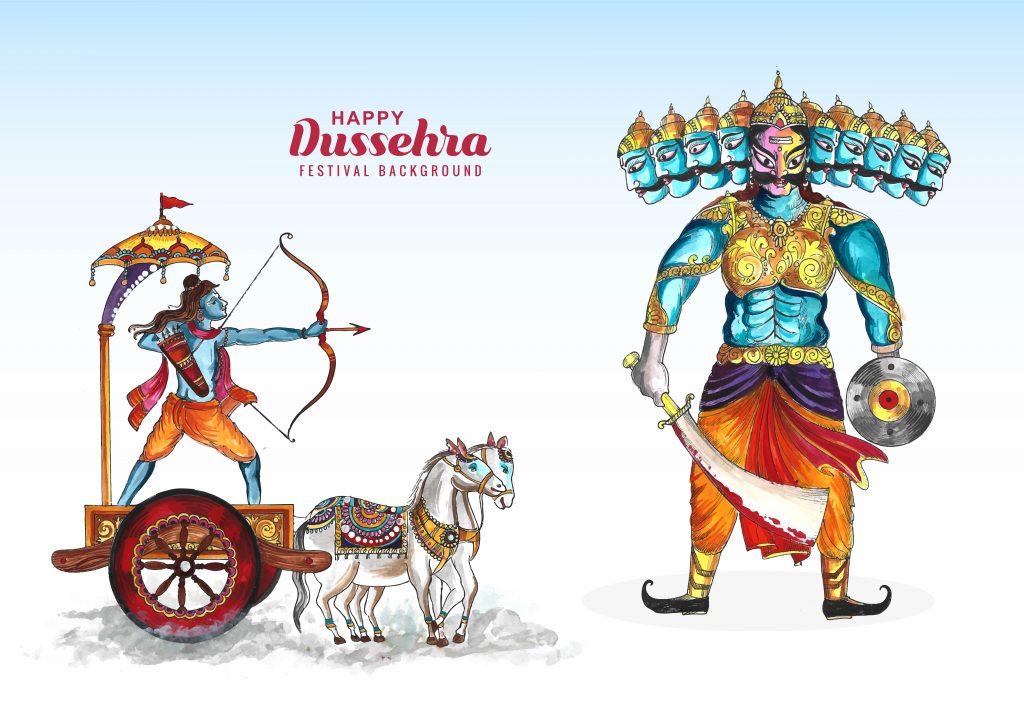Dussehra also known as Vijayadashami, Dussehra, Dasara or Dashain is a famous festival celebrated every year in India. It is considered as the victory of truth over falsehood. The effigies of Ravana, Meghnat and Kumbhakaran are burnt on this day. Dussehra is celebrated every year on the 10th day of the month of Ashwin of Navratras. This festival is celebrated with pomp all over the country. We will describe Dussehra history and significance below.
Dussehra History and Significance | Celebration
According to Hindu mythology, there are many connections to Dussehra festival. One of those stories is Lord Rama story which is among popular stories.
Dussehra History
According to Hindu mythology or religious writings, the king of Lanka, Ravana, who had 10 heads, had abducted Sita ji, who was the wife of Shri Ram. Hanuman ji is considered to be a devotee of Shri Ram ji, he found out Sita ji and then Ram Chandra ji, together with the monkeys, started climbing the country of Lanka which was the capital of Ravana.
Then there was a war between the Asuro and the Vanara army. This war lasted for 9 days. As everyone knows, truth always wins over untruth, in the same way the monkeys won over the demon army. In this war Shri Ram Chandra ji killed Ravana.
Dussehra Significance
Dussehra festival signifies the victory of good over evil. The rituals and celebration of Dussehra varies from region to region. In some region, it is a single day festival, but in some region it extends for ten days. Dussehra festival is on the last day of the Hindu festival, Navratri. Navratri is a Sanskrit word which means ‘nine nights’. The final day that 10th day of the festival is Dussehra which is also known as the Vijayadashami.
Dussehra Celebration
In India, Ravana is also worshiped from house to house because he was a very learned scholar king. On this occasion, Ramlila is organized across the country and fair is also organized.
